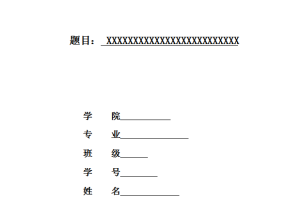摘 要
管理战略理论关心两个问题:第一,为什么有的公司绩效十分突出?第二,为什么从长期来看,公司之间总存在绩效差异?对于这两个问题,达成的共识是,组织具有竞争优势是绩效突出的原因,从长期来看,可持续竞争优势是绩效差异的原因。
动态能力观点为战略管理的重要理论,其强调组织需要具备动态的能力发展与调整,方能面对环境变迁所带来的挑战。此理论其中一个重要议题是能力的僵固化。认知是组织能力发展的基础,对于创业者主导的企业(如无锡尚德)尤其是如此。因此认知可能影响到能力发展的过程环节,尤其是面对潜在僵固性如何处理的认知。
目前市场环境正变得越来越动态,技术创新的速度发展,国际化经济和市场的全球化,客户需求的多样化,导致竞争更加激烈。如何保持竞争优势可持续、如何将核心能力动态化以避免僵固,成为每个企业,尤其是创业者主导的企业关注的焦点。尚德曾经是太阳能行内的世界领先企业,2010年的销售额为29亿美元,净利润为2.38亿美元。该公司是首家在美国上市的中国民营企业,其IPO规模达到创纪录的4亿美元。一个曾经被视为典范的公司,一个行业的基准,十年间大起大落,无锡尚德被各界进行讨论。
本文通过对无锡尚德案例的纵向深入研究,主要关注的是:一个曾经行业领先的企业,在每个时间阶段遇到僵固性时,受到施正荣与团队认知影响,因此能够或不能够回应,而造成能力发展或僵固加深的过程。主张无锡尚德的能力僵固化,是因为每个阶段遭遇潜在僵固性时,受到管理者与团队认知错误的影响,因而无法处理僵固(或选择错误的僵固处理方法),因而真正导致了最终的僵固化。试图从管理者认知的角度解释僵固是如何逐渐形成的,以期为相似创业者主导的企业提供参考。
关键词:动态能力;能力僵固;处理方法;管理者认知
ABSTRACT
The development of strategic management theory focuses on two basic problems. On the one hand, why do some organizations do better than others?On the other hand, why do organizational performance differences persist?The consensus on these two issues is that the organization has a competitive advantage that is better than other organizations, and that sustained competitive advantage leads to long-term performance differences. The view of dynamic capability is an important theory of strategic management. It emphasizes that the organization needs to have the dynamic capability to develop and adjust to face the challenges brought by environmental changes. One of the key issues in this theory is the rigidity of capability. Cognition is the foundation for the development of organizational capability, especially for entrepreneurial enterprises (such as suntech). Therefore, cognition may affect the process of the development of capability, especially in the face of the perception of potential rigidity.
The current market environment is becoming more and more dynamic, the speed of technological innovation is accelerating, the internationalization of the economy and the globalization of the market, and the diversification of the customers’ demand has caused the competition to become more and more intense. How to maintain the sustainability of competitive advantage, how to make the core capability dynamic to avoid rigid, becomes the focus of every enterprise, especially the enterprise that the entrepreneur dominates. Suntech, once a world-leading company in the solar industry, earned $2.9 billion in sales and a net profit of $238 million in 2010. Suntech, the first Chinese private company to list on the us main board, had a record $400m IPO. A company that was once seen as a model, a benchmark, has been held up for a short time, and the suntech case has been left to the academic community to discuss a lot of topics.
This article through to suntech longitudinal study case, the main concern is: as an industry leading enterprise, suntech at each stage when you meet the capability of rigid influenced by shi and his team cognition, therefore can or can’t respond to this kind of rigid, and cause or rigid deepen the process of capability development. This paper argues that suntech’s capability to the formation of rigidity, because in each stage may cause capability rigid event, due to the manager and his team cognitive errors, thus unable to deal with rigid (or choose the wrong rigid processing method), and thus lead to the final real rigidity. This paper attempts to explain how the rigid structure is gradually formed from the perspective of managers’ cognition, so as to provide references for enterprises that are leading enterprises.
KEY WORDS: Dynamic Capability, Competences Rigidity, Processing Method, Management Cognition
目 录
摘 要……………………………………………………………………………………………………………….. I
ABSTRACT………………………………………………………………………………………………………. II
目 录……………………………………………………………………………………………………………. IV
第一章 绪 论………………………………………………………………………………………………….. 1
1.1 研究背景………………………………………………………………………………………………. 1
1.2 研究意义………………………………………………………………………………………………. 1
1.3 国内外研究现状…………………………………………………………………………………….. 2
1.3.1 国外研究现状……………………………………………………………………………….. 2
1.3.2 国内研究现状……………………………………………………………………………….. 2
1.4 技术路线及研究思路………………………………………………………………………………. 3
1.4.1 技术路线……………………………………………………………………………………… 3
1.4.2 研究思路……………………………………………………………………………………… 4
1.5 创新点与不足………………………………………………………………………………………… 5
1.5.1 创新点………………………………………………………………………………………… 5
1.5.2 不足之处……………………………………………………………………………………… 6
第二章 研究设计……………………………………………………………………………………………….. 7
2.1 研究方法………………………………………………………………………………………………. 7
2.1.1 案例研究法………………………………………………………………………………….. 7
2.1.2 文献研究法………………………………………………………………………………….. 7
2.1.3德尔菲法………………………………………………………………………………………. 8
2.2 案例选择………………………………………………………………………………………………. 8
2.3 数据收集………………………………………………………………………………………………. 9
第三章 文献回顾……………………………………………………………………………………………… 11
3.1 动态能力…………………………………………………………………………………………….. 11
3.1.1 动态能力的起源…………………………………………………………………………… 11
3.1.2动态能力的内涵……………………………………………………………………………. 12
3.1.3 动态能力与创业型企业…………………………………………………………………. 13
3.2 核心僵固…………………………………………………………………………………………….. 13
3.2.1 核心僵固的起源…………………………………………………………………………… 13
3.2.2 核心僵固的内涵…………………………………………………………………………… 13
3.2.3 核心能力悖论……………………………………………………………………………… 14
3.3 潜在僵固的处理…………………………………………………………………………………… 15
3.3.1 彻底动态化法……………………………………………………………………………… 15
3.3.2 动态维度修正法…………………………………………………………………………… 16
3.3.3 创新惯例法…………………………………………………………………………………. 16
3.4 管理者认知…………………………………………………………………………………………. 16
3.4.1 管理者认知的内涵……………………………………………………………………….. 16
3.4.2 管理者认知与动态能力…………………………………………………………………. 17
3.4.3 管理者认知与核心僵固…………………………………………………………………. 17
第四章 案例分析……………………………………………………………………………………………… 19
4.1 产业背景…………………………………………………………………………………………….. 19
4.2 案例介绍…………………………………………………………………………………………….. 20
4.3 研究发现…………………………………………………………………………………………….. 22
4.3.1 管理者对潜在僵固处理方法的选择………………………………………………….. 24
4.3.2 管理者未对潜在僵固进行处理的原因………………………………………………. 27
4.3.3 管理者认知对能力僵固过程的影响………………………………………………….. 32
第五章 结论与展望………………………………………………………………………………………….. 35
5.1 研究结论与建议…………………………………………………………………………….. 35
5.2 研究展望………………………………………………………………………………………. 36
参考文献……………………………………………………………………………………………………….. 37
发表论文与参加科研情况说明…………………………………………………………………………….. 41
致 谢……………………………………………………………………………………………………………. 42





